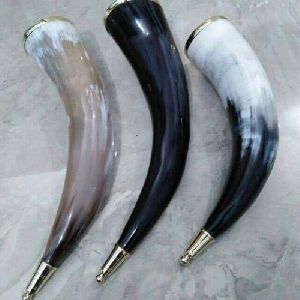Sneng
 Horns fitted with a vibrating reed on their sides are found in Southeast Asia and known by several names Kwai (Myanmar), sneng (Cambodia) and tödiap (Vietnam). Probably originally used in warfare and as alarms, they may be used in rituals and funerals. The pitch may be controlled by opening or closing the thumb hole or adjusting the larger opening with the hand.
Horns fitted with a vibrating reed on their sides are found in Southeast Asia and known by several names Kwai (Myanmar), sneng (Cambodia) and tödiap (Vietnam). Probably originally used in warfare and as alarms, they may be used in rituals and funerals. The pitch may be controlled by opening or closing the thumb hole or adjusting the larger opening with the hand.
Sneng a single reed wind instrument made from an animal horn. Sneng used on elephant hunting expeditions and the ploy (free-reed mouth organ) with gourd windchest are survivals from the earliest periods.
Commonly found in many parts of South East Asia are free reed horns, such as the Burmese kwai, the Cambodian sneng and the Vietnamese tödiap. These are made from cow horn, water buffalo horn, or elephant tusk; open at either one or both ends, with a free reed placed over an opening midway along the concave side. The pitch of the note produced can be varied by covering and uncovering the open end(s). These instruments are chiefly used for alarm signals, funeral rites and other ritual purposes.